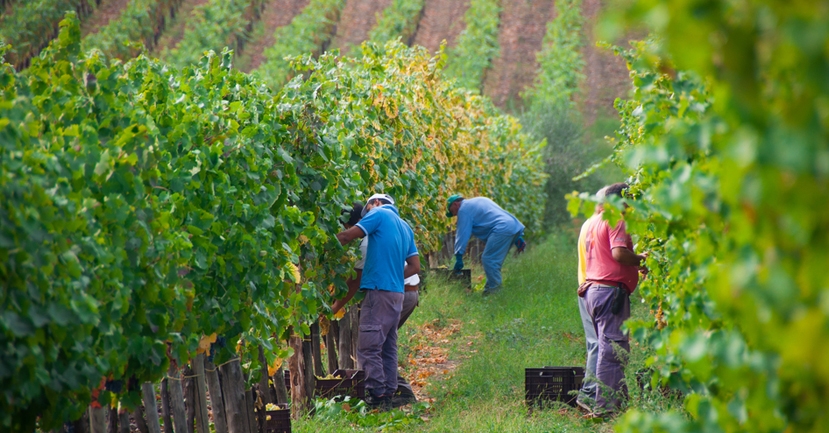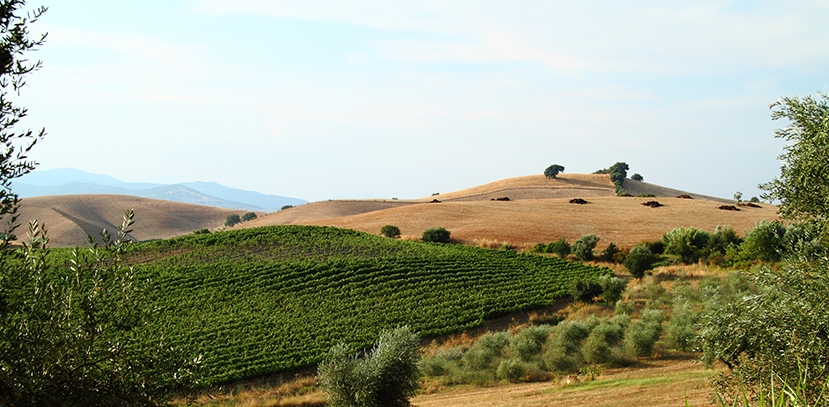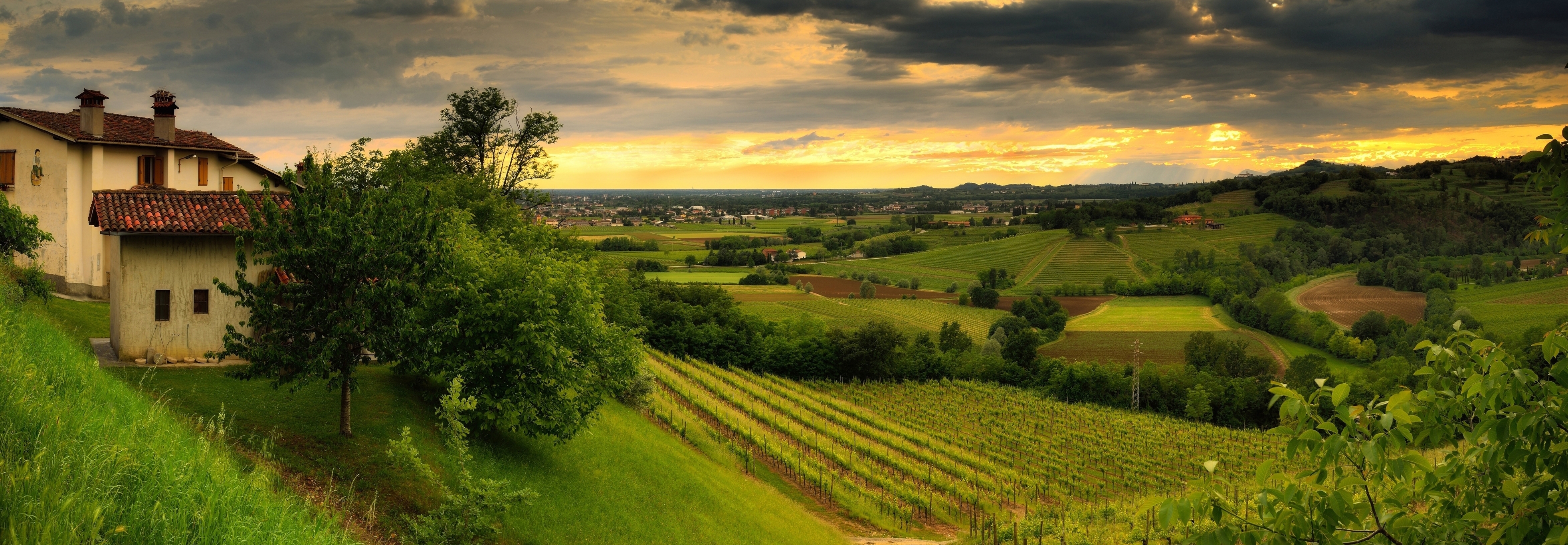BLOG
A Rosé Renaissance in Provence
Victoria Daskal
Regional Spotlight
Dappled sunshine, joie de vivre holidays, and endless lavender fields are just the tip of Provence's appeal. The other is its world-famous rosé.
According to the OIV, in the last twenty years, rosé wine has seen significant growth in both demand and supply globally, with production increasing by 25% between 2001 and 2021. Provence not only epitomizes the rosé lifestyle but also stands as the epicentre of pink wine production, contributing 40% of France’s rosé and 6% of the world’s volume. But where did this success originate, and what exactly is a rosé from Provence?

Provence vs Vins de Provence
Wine production in Provence dates back 2,600 years, and the name of the region is based on “Provincia Romana” – meaning it was one of the Roman provinces along the Mediterranean. Yet winemaking in the region started even earlier with the Phoenicians when they brought vines to what is now Marseille. The cities of Aquae Sextiae (Aix-en-Provence) and Forum Julii (Fréjus), along with its military port, arose as the Roman Empire expanded and brought grapevines wherever it went, which is how the Rhône Valley, Beaujolais, Burgundy, Gascony and Bordeaux emerged after Provence.
Ancient texts documented the Roman way of making wine from a field blend of white and red varieties, resulting in a pinkish hue similar to what is still done today in Provence. Culturally speaking, the region of Provence stretches from the border with Italy, along the southeastern Mediterranean coast of France, up to the Rhône River, and even beyond Avignon to cities like Nimes, where there are strong Provencal influences. However, in these territories north and west of Marseille, wine jurisdiction falls under Southern Rhône, so they are not considered ‘Vins de Provence.’
Provence Appellations
Officially, there are three main Provence wine appellations : Côtes de Provence, Coteaux d’Aix-en-Provence and Coteaux Varois en Provence. This combined area stretches 200 km across the Var, Bouches-du-Rhône, and part of the Alpes-Maritimes departments and benefits from 2,800 hours of sunshine per year. The region's many winds (locals count 32 named winds) keep humidity at bay, allowing a whopping 44% of the region to be certified organic. The famous Mistral, a constant cooling wind from the north, may be fierce but helps maintain acidity levels while providing a longer growing season for grapes to develop exceptional flavours.
There are 575 producers here, making a combined 174 million bottles of wine annually, 91% of which is rosé, 5% red and 4% white. Côtes de Provence is the largest AOC, featuring five distinct terroir designations known for their unique aspects, soils and altitudes. These designations—Sainte Victoire, Fréjus, La Londe, Pierrefeu and Notre-Dame des Anges—are indicated on labels to identify grapes sourced from these specific areas.
Certain Côtes de Provence bottles also bear the term ‘grand cru classé’ on the label, referring to a classification that dates back to 1955 which awarded estates (not villages or specific vineyards) for their exceptional quality. Today, there are 18 estates with this classification, but the quality is not always guaranteed as any wine labelled by that estate can include the title regardless of style, yield, or production methods.

Rosé is a Science in the South of France
From the 5th to the 12th centuries, it was the monks who perpetuated viticulture in the region, identifying the best terroirs and techniques for production. In the early 20th century, Provencal families established châteaux and invested further in the lands. The pivotal moment came in the 1970s when local growers and winemakers made a collective effort to improve quality across the region. From there came the established AOCs, and in 1999 Le Centre du Rosé was established, the world’s first and only research centre dedicated to rosé wines. Founded by leaders in the Provence rosé industry, the centre focuses on different aspects of viticulture, winemaking and wine preservation.
The Centre du Rosé has identified the six main colours of Provencal rosé, ranging from Apricot, Melon, Pomelo, Peach, Lychee and Nacré (meaning mother of pearl), as well as the lifecycle of a bottle of rosé and how its aromas develop.

How is rosé wine made in Provence?
Provence rosé is a blend of two or more varieties. The permitted red grapes are Grenache, Cinsault, Syrah, Mourvèdre, Counoise, Tibouren, Cabernet Sauvignon, Carignan, Barbaroux, Calitor and Caladoc. However, the top four are: 1) Grenache, which offers structure and roundness, red fruit turning into spicy aromas; 2) Syrah for intense colour, structure rich in tannins, subtle notes of jammy berries; 3) Cinsault for fresh, delicate fruit; and 4) Mourvèdre for spice, blackberry, and violet aromas. Producers can add up to 15% of white grapes to the red grapes before pressing to bring citrusy freshness, primarily from Vermentino (Rolle), but also from Grenache Blanc, Clairette, Sémillon, and Ugni Blanc (Trebbiano).
Harvest normally takes place at night when the grapes are coldest to preserve acidity and can be done by machine or hand, depending on the vineyard's topography and the wine's price. The red grapes are crushed to release the colour from the skin, and the juice can either be direct-pressed, resulting in a very pale onion skin/salmon colour, or macerated with the skins for a few hours before pressing. Alcoholic fermentation takes place in temperature-controlled steel vats, with a typical alcohol range for Provence around 13-13.5% and a dry level of residual sugar. Options to age on lees, block or carry out full or partial malolactic conversion, or mature in oak mean there are numerous styles and quality levels of Provence rosé on the market.

Smaller AOC Gems of Provence
Beyond the three key Provence AOCs, a handful of small but reputable AOCs are worth seeking out. Bandol is known for a slightly deeper hued, bolder style of rosé, as well as structured and savoury reds. It is home to the legendary Domaine Tempier, Château Pradeaux, Pibarnon and Château Romassan, owned by Domaine Ott. Cassis AOC, a tiny fishing village, is mainly planted with white grapes, producing 70% white wine but also elegant pink wine, especially from the famous producer Clos Sainte Magdeleine.
Palette AOC is a monopole where the prestigious Château Simone resides, producing white, rosé and reds worth cellaring. Within the municipality of Nice sits one of the oldest vineyards from Phoenician times, now part of the Bellet AOC, home to nine wineries producing white, rosé and red wines on 50 hectares.
Which way is the wind blowing?
Emerging trends in the region include adapting to climate change, a commitment to sustainability and the continuing premiumization of the rosé category. Since December 2021, new grape varieties have been permitted in the Provence PDOs: Rousseli (an ancient variety of the Var that has been reintroduced into the vineyards), and Greek varieties Agiorgitiko, Moschofilero and Xinomavro, along with Calabrese (also known as Nero d’Avola). These southern Mediterranean grapes will give growers more options in the face of drought and heat stress.
As a category, rosé is widely produced as a youthful, early-drinking style with plenty of primary red fruit flavours, achieved by fermenting in temperature-controlled stainless steel and bottled for early consumption. However, in the upper echelons of Provence producers, the use of oak in fermentation and/or ageing is growing to differentiate the good from the great. Take Château d'Esclans’ unoaked superstar Whispering Angel and its more premium barrel-fermented Rock Angel, which is a mere stepping stone to their ultra-exclusive Garrus, fermented and aged entirely in new French oak barrels. Plenty of clever producers like Chateau Grand Boise, Domaine Ott and Château Sainte Marguerite are diversifying their offering through unoaked and oak-matured rose bottlings.

Never shy to get creative with their eccentric bottle shapes, Provence wine bottles are normally clear glass show off the elegant pink hue of rosé. However, some producers like Clos Cibonne and Galoupet have opted for dark glass (made from 70% recycled glass) to protect the wine from lightstrike, which can diminish fresh fruit aromas and lead to unsavoury, herbal character in the wine like cabbage.
Provence rosé may seem like a standard summer commodity: trendy and seasonal, yet its rich history proves it is a timeless and ever evolving wine style that captures the essence of its terroir and the spirit of the south of France.



